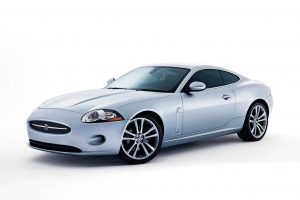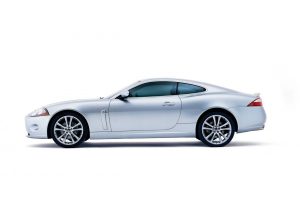Recalls: Jaguar X150 XK and XKR
Overview
Manufacturers, or importers, issue recalls for defects or faults which have the potential to cause injury. Generally, manufacturers will inform the original buyers if their vehicle is subject to a recall and of the steps required to remedy the defect or fault. Please note that the recalls below (if any) are for Australian-delivered vehicles only. Furthermore, the number of recalls should not be taken as an indication of a model’s reliability or its safety more generally.
Recalls: Jaguar X150 XK and XKR
- In May 2008, a recall was issued for Jaguar XK models produced from 2005-09 due to restraint control modules being incorrectly configured for left-hand drive vehicles and affecting the deployment of the side airbags (PRA 2008/10033).
- In August 2010, a recall was issued for Jaguar XK models with naturally aspirated 5.0-litre V8 engines in the VIN range B28268 to B39482. The in-tank electric fuel pump for these vehicles may not activate correctly following the start-up cycle, potentially causing the engine to cut out. Power assisted steering could also be lost if the vehicle speed dropped below the torque converter’s speed threshold (PRA 2010/11929).
- In March 2011, a recall was issued for 2010 Jaguar X150 XK and XKR model year vehicles with petrol engines and in the VIN range B34722 to B38302. In these vehicles, power steering pipes were manufactured with zinc-nickel plating that did not meet corrosion protection requirements. As a result, the pipes could corrode, leading to pin-holing of the pipe; this could allow pressurised power steering fluid to leak into the engine bay, causing a loss of power assistance steering system and possible ignition of the fluid (PRA 2011/12445).
- In April 2014, a recall was issued for 2013 model year X150 XKR-S vehicles that had serial numbers (i.e. the last six digits of the VIN) in the range B51453 to B54244. After prolonged racetrack use, it was possible that the toe link in these vehicles could fracture and separate from the rear subframe. If this occurred, the vehicle would not be stable and may pose a hazard to the driver and other road users (PRA 2014/14046).
Problems and faults: Jaguar X150 XK
Overview
This section identifies potential problems, causes and fixes based on the experiences of owners and repairers, online sources and technical service bulletins. This information is provided solely for reference purposes and AustralianCar.Reviews recommends that only properly qualified persons carry out repairs or modifications. Furthermore, the number of items below should not be taken as an indicator of a model’s reliability or the frequency with which they may occur.
To report a problem or fault to the AustralianCar.Reviews team, please use the Contact Us form. Note that AustralianCar.Reviews does not offer advice on automotive problems or disputes; such enquiries will not receive a reply. For vehicles purchased from dealers after 1 January 2011, please see our Australian Consumer Law fact sheet.
Jaguar X150 XK: engine won’t crank and ‘DSC not available’
In July 2006, Jaguar issued technical bulletin XK206-002 for 2007 model year Jaguar XK vehicles with VINs in the range B00001 to B05215. In these vehicles, the engine may not crank and ABS Diagnostic Trouble Codes (DTCs) C0082-54 or C0044-28 may be stored. When this occurs, the ABS module is unable to provide the required brake pressure inputs to the Central Junction Box (CJB) such that the engine crank sequence cannot be initiated. In this situation, the engine would not crank and the message ‘DSC not available’ would appear on the message centre. To fix, the ABS pressure sensor was to be re-calibrated.
Jaguar X150 XK: front brake caliper creak
In June 2006, Jaguar issued technical bulletin XK206-001 for post-2007 model year Jaguar XK vehicles with VINs after B00001. In these vehicles, the driver may hear a creaking noise from the front brakes under light brake applications, at slow speeds and while steering. The noise may also be heated under light or medium braking while coming to rest with the steering wheel in the straight-ahead position. According to the technical bulletin, these symptoms could be due to contact between the calliper carrier and brake pad anchor points. To fix, the front calliper carrier and brake pad anchor surfaces should be cleaned and greased.
2007-09 model year Jaguar X150 XK 4.2 V8: engine won’t start or stalls
In December 2012, Jaguar issued Technical Bulletin JTB00268NAS2 for 2007-09 model year Jaguar X150 XK vehicles that had 4.2-litre naturally aspirated V8 engines. According to the technical bulletin, the driver may experience difficulty in getting the engine to start (a ‘rough start’) or the engine may stall following a hot soak of 15-20 minutes (i.e. the engine had previously been running but had been off for 15-20 minutes). According to the technical bulletin, this could be caused by the fueling calibration not being ‘robust’ for 10 per cent ethanol fuel. To fix, the Engine Control Module (ECM) software was to be updated. The affected Jaguar X150 XK vehicles had serial numbers in the range B00001 to B32752.
2010-12 model year Jaguar X150 XK: faulty fuel gauge
In March 2014, Jaguar issued Technical Bulletin JTB00301NAS1 for 2010-12 model year Jaguar X150 XK vehicles that had 5.0-litre V8 petrol engines (naturally aspirated and supercharged). In these vehicles, the fuel gauge may:
- Not work;
- Not show more than half full;
- Fluctuate; and/or,
- Switch on/off intermittently.
According to the technical bulletin, these symptoms could be caused by:
- Backed-out pins
- internal to the fuel tank (sender wiring);
- in the fuel pump module; and,
- in the fuel tank flange assembly; or,
- Fretting corrosion across the fuel sender harness pins inside the fuel tank (black connectors).
To fix, the fuel sender harness was to be modified; this process is described in Technical Bulletin JTB00301NAS1. The affected Jaguar X150 XK vehicles had serial numbers in the range B32753 to B47682.
2010-14 model year Jaguar X150 XK 5.0L Supercharged V8: rattling/knocking noise from supercharger
In May 2014, Jaguar Land Rover issued Technical Bulletin JTB00349v2 for 2010-14 model year Jaguar X150 XK vehicles that had 5.0-litre supercharged V8 engines. For these vehicles, the owner may hear a loud clattering, rattling or knocking type noise from the engine bay, specifically the supercharger. This noise could be due to wear on the torsional isolator and/or the torsional isolator spring support shaft, causing excessive backlash in the supercharger drive.
To fix,
- The supercharger belt drive was to be removed and the supercharger pulley rotated by hand;
- The supercharger spring isolator kit was to be fitted if there was a clunk or knocking noise from the supercharger, or if there was significant free play when turning the pulley before the rotors started to turn;
- If any of the following symptoms were present, the supercharger was to be replaced:
- The pulley did not rotate freely (i.e. it would stick, be difficult to move or roughness could be felt in the bearing during rotation;
- The blades/rotors were damaged; or,
- During normal engine operation, the supercharger made an excessive whine noise.
The affected Jaguar XK vehicles had serial numbers after B32753.
Supercharged V8: rattling noise
A rattling noise from the Jaguar XKR’s variable valve timing system may be due to its hydraulics. If so, the variable valve timing system requires replacement.
ZF transmission
The six-speed ZF automatic transmission is described as a ‘sealed for life’ unit, though specialists recommend changing the oil every 100,000 kms; the filter in the gearbox should also be replaced. Leaks from the automatic transmission may be coming from the connector sleeve.
Suspension
- CATS failure: For XK vehicles with Jaguar’s CATS (Computer Active Technology Suspension), the electronic components within the dampers tend to fail around 100,000 kms.
- Around 100,000 kms, the lower wishbones and all suspension bushes may require replacement to maintain the XK’s ride and handling qualities. Worn lower wishbones and bushes may cause uneven tyre wear, vague steering or shuddering when braking.
- A knocking noise from the front end may be due to a dislocated lower control arm bushing for the stabiliser bar.
Hand-brake failure
There have been reports of the electric park brake failing at around five years of age.
Jaguar X150 XK: seats
The power adjustable front seats may move roughly due to a lack of grease on the seat rails. If the seats do not move at all, the motor may have failed or the module may not be responding to the wake-up signal from the network.
The seatbelt warning light may illuminate and the warning chime may activate intermittently even though there is nobody in the passenger seat due to a faulty seat occupant sensor.




